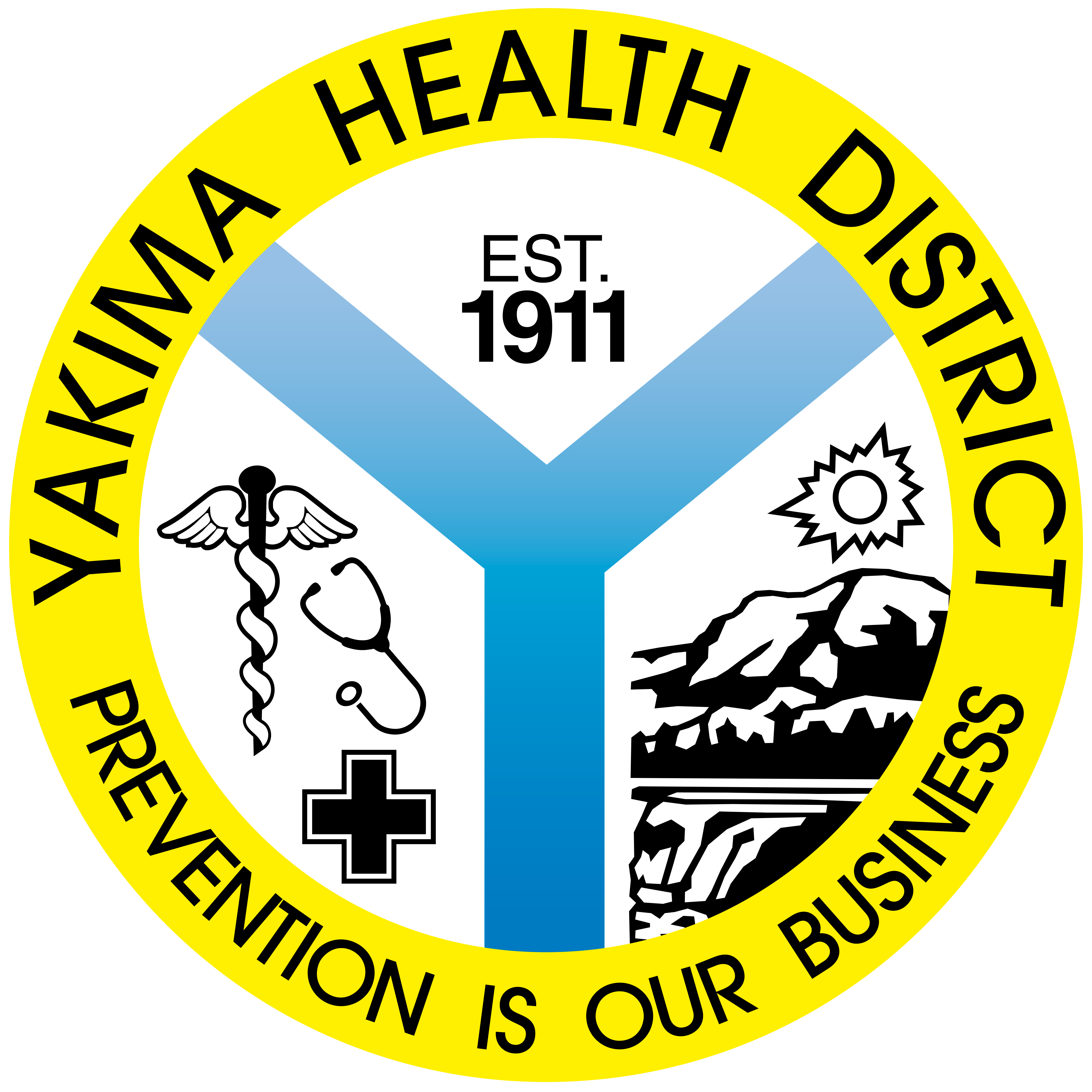
This is an evolving situation. The guidance is subject to change frequently. Please ensure you are reviewing the information as it comes out.
Contact: Melissa Sixberry, Director of Disease Control 509-249-6509
Requested Action:
- Be aware of current guidance from CDC and WA-DOH for COVID-19 including PPE, isolation, quarantine, and testing
- PPE – Personal Protective Equipment for Suspect or Confirmed COVID-19 Patients (3/15/2020)
- Isolation & Quarantine – Health Care Workers and First Responders – Return to Work Guidance for Healthcare Workers (HCWs) and First Responders (FRs) Who Have Confirmed COVID-19 Infection or Are Asymptomatic with High or Medium Risk Exposures* to a Known Case of COVID-19 (3/19/2020)
- Isolation – General Public – What to do if you have confirmed or suspected coronavirus disease (COVID-19) (3/17/2020)
- Quarantine – General Public – What to do if you were potentially exposed to someone with confirmed coronavirus disease (COVID-19) (3/17/2020)
- Testing – COVID-19 Testing Information for Healthcare Providers (3/13/20)
Background:
COVID-19 disease should be considered in patients with fever, cough, or shortness of breath without other explanation. As the COVID-19 outbreak continues to rapidly evolve, it is important to ensure local health jurisdictions and clinical partners are aware of current operational guidance on: testing, personal protective equipment, isolation, and quarantine. A summary of current recommendations is provided below. In addition, links are provided to documents for more detailed guidance on each topic.
For the most up-to-date reports of cases in Yakima County, visit the Yakima Health District COVID-19 website.
At this point in time, providers must contact YHD when:
- Reporting confirmed cases of COVID-19
- Fax lab and demographics to 509-249-6628
- Requesting testing at the WA DOH PHL
- If testing at a commercial lab, YHD does not need to be notified. Follow guidelines outlined in “Testing”
- During business hours call 509-249-6541. After hours 509-575-4040 Option 2
1. Limit Risk of Exposure at Healthcare Facilities
Healthcare facilities should begin planning for measures to minimize the possibility of exposure in lobbies, exposures to healthcare workforce as well as to free up room space.
- Healthcare facilities are encouraged to consider telehealth options as available.
- Healthcare facilities are encouraged to cancel and/or reschedule all non-emergent procedures.
- Hospitals should implement visitor restrictions. The Yakima Health District recommends allowing one asymptomatic close contact visitor with PPE and restricted visitation of the unit.
- To further reduce the volume of patients coming into its facilities, healthcare facilities should reschedule non-essential visits unless clinically necessary for the next four weeks.
2. PPE
Patients with known or suspected COVID-19 who are critically ill as well as those requiring aerosol generating procedures are recommended to be placed in standard/airborne/contact precautions with eye protection. For other patients with known or suspected COVID-19, the Department of Health recommends using standard/droplet/contact precautions with eye protection.
Follow recommendations for extended use and limited reuse of N95 filtering facepiece respirators in healthcare settings.
Guidance document for PPE:
https://www.doh.wa.gov/Portals/1/Documents/1600/coronavirus/ppeCOVID-19confirmed.pdf
3. Isolation
Health Care Workers and First Responders Health Care Workers (HCW) and First Responders (FR) with confirmed COVID-19 should not return to work until at least 3 days (72 hours) have passed since recovery. Recovery is defined as:
- Resolution of fever without the use of fever-reducing medications AND improvement in respiratory symptoms (e.g., cough, shortness of breath) AND
- at least 7 days have passed since symptoms first appeared
Healthcare workers and first responders can return to work provided they:
- Adhere to respiratory hygiene, hand hygiene, and cough etiquette
- Wear a facemask at all times while in the healthcare facility, if there is a sufficient supply of facemasks, until all symptoms are completely resolved or until 14 days after illness onset, whichever is longer.
Employers should consider reassigning HCWs who work with severely immunocompromised patients, such as bone marrow transplant patients, to work in other areas. Guidance document for health care workers and first responders: https://www.doh.wa.gov/Portals/1/Documents/1600/coronavirus/HealthCareworkerReturn2Work.pdf
4. Quarantine – Healthcare workers and First Responders
Asymptomatic HCWs and FRs with High or Medium Risk Exposures to a known case of COVID-19 should actively monitor for symptoms consistent with COVID-19 infection but can return to work provided they:
- Adhere to cough etiquette and hand hygiene
- Wear a facemask at all times while in the healthcare facility, if there is a sufficient supply of facemasks, until the end of the 14-day monitoring period from date of exposure.
Guidance document: https://www.doh.wa.gov/Portals/1/Documents/1600/coronavirus/HealthCareworkerReturn2Work.pdf
5. Isolation – General Public
Consistent with CDC guidelines, WA DOH recommends persons with COVID-19 who have symptoms and were directed to care for themselves at home may discontinue home isolation under the following conditions:
- At least 3 days (72 hours) have passed since recovery defined as resolution of fever without the use of fever-reducing medications and improvement in respiratory symptoms (e.g., cough, shortness of breath); and,
- At least 7 days have passed since symptoms first appeared.
Guidance document for general public: https://www.doh.wa.gov/Portals/1/Documents/1600/coronavirus/COVIDcasepositive.pdf
6. Quarantine – General Public
Individuals who have been in close contact with someone with COVID-19 should monitor their health for fever, cough and shortness of breath during the 14 days after the last day they were in close contact with the sick person with COVID-19. They should not go to work or school, and should avoid public places for 14 days.
Guidance document: https://www.doh.wa.gov/Portals/1/Documents/1600/coronavirus/COVIDexposed.pdf
7. Testing
There are currently no restrictions on who can be tested for COVID-19 and commercial testing is becoming more available. Healthcare providers may test any patient with symptoms consistent with COVID-19 (e.g., fever, cough, shortness of breath) but until testing supplies and laboratory capacity are widely available, public health is asking providers to follow the below recommendations. The following patients with COVID-19 symptoms should be tested for COVID-19:
- Patients hospitalized with severe lower respiratory illness
- Patients who work in any setting where healthcare services are delivered (including: hospital, department of corrections, juvenile detention centers, mental/behavioral health clinics, longterm care facilities, and similar)
- Patients working in other public safety occupations (e.g., law enforcement, fire fighter, EMS)
- Patients who live or work in an institutional or congregate setting (e.g., corrections, long term care facility, homeless/shelters)
- Patients working in critical infrastructure occupations (e.g., grocery stores, pharmacist, restaurants, gas stations, public utilities, etc.)
The following patients with COVID-19 symptoms should contact their healthcare provider and be tested for COVID-19 if their symptoms worsen or their healthcare provider recommends testing:
- Patients older than 60 years
- Patients with underlying medical conditions
- Pregnant women
The following individuals experiencing symptoms of COVID-19 (Fever greater than 100.4F or subjective fever or cough or shortness of breath) can be tested at the WA DOH Public Health Lab:
- Patients who work in any setting where healthcare services are delivered (including: hospital, department of corrections, juvenile detention centers, mental/behavioral health clinics, longterm care facilities, and similar)
- Patients working in other public safety occupations (e.g., law enforcement, fire fighter, EMS)
- Patients who live or work in an institutional or congregate setting (e.g., corrections, long term care facility, homeless/shelters)
- Patients hospitalized with severe lower respiratory illness
Younger (less than 60 years old), healthy individuals with mild illness do not need to be tested and testing is not recommended in persons who are asymptomatic. A negative test result does not rule out an infection.
To conserve swabs needed for COVID-19, discontinue outpatient influenza testing unless you wish to perform both tests and your lab can run both from the same swab.
8. Recommendations for Airborne Contaminant Removal for Room Turnover
- Two hours is a necessary, and conservative estimate when a facility does not know what the air exchange rate is for a facility.
- If a facility can guarantee 6 or more exchanges per hour, that facility can move to a onehour turnover.
Guidance document for testing: https://www.doh.wa.gov/Portals/1/Documents/1600/coronavirus/Interim2019NovelCoronavirusQuicksheetProviders.pdf
9. Patient Education
Providers should review documents below with patients and provide a copy to take home.
- For symptoms—What to do if you have symptoms of COVID-19 and have not been around a person diagnosed with COVID-19.
- For exposed—What to do if you may have been exposed to a person with COVID-19.
- For confirmed or suspected—What to do if you have confirmed or suspected COVID-19.
Other patient resources available on WA DOH Coronavirus website
10. Resources:
- DOH website: https://www.doh.wa.gov/Emergencies/Coronavirus
- CDC website: https://www.cdc.gov/coronavirus/2019-nCoV/index.html
- Infection control: https://www.cdc.gov/coronavirus/2019-ncov/infection-control/index.html
- DOH COVID-19 Phone Line for the 1-800-525-0127
